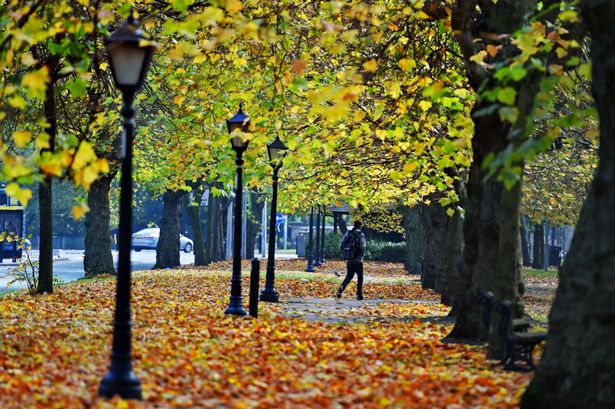Fall is when we reap what we have sown
Autumn is inexorably associated with ripe maturity, harvest and death, as well as the implicit understanding of an eventual rebirth, the offer of resurrection.
The autumn ushers in the dark season. The season of diminished light. From now until the Vernal Equinox, six months hence, the nights are longer than the days. Shade and chill prevail. The year, the season, the sun, are slowing down, growing cold, getting old. The insidious forces of death sweep in and overshadow the vibrant life source.
[pullquote]Just as the dying sun is sure to return, so, too, will the seeds buried deep in the dark, begin to sprout come springtime. This potent promise of prospective plenitude sustains us through the empty stomach months.[/pullquote]The air and land, once alive with teeming species, are becoming empty in fall, and mute. Birds leave. Insects nest. Burrowing animals hunker. The trees discard their once green mantles, shrugging off leaves aglow with the fiery patina of age and sun. Stripped, they emerge skinny and naked, shivering in the wind. The flowering and fruitful plants shrivel and wither and prepare to die with the coming cold. Final fruits, nuts, ripe grains and grasses are gathered in before the fatal first frost.
Fall is like being retirement age. Having weathered the cycles, the rainbows and the storms, the trials and the troubles, the struggles; the teachings of a full life, it is now the season to reap what you have sown. If you planted your seeds in the spring and tended them well — watered and weeded, pruned and staked, mulched and sprayed, propitiated and prayed; and if the weather was willing — enough, but not too much, sun, wind and rain; and if you were lucky — favored by the powers that be in the universe; come autumn it is prime time to harvest your crop.
You have lived responsibly, raised your family. You have followed your calling, perfected your craft, participated in community. You have done your job, played your part. You have paid your dues — not to mention your payments, your taxes. You have worked your ass off. You are ready for a rest. You earned it. You yearn for the freedom and leisure that follows hard work well done. This is the future you have been saving for. In fall, you cash in and collect the fruits of your love and long labor.
Autumn age provides the perspective of the telescope of time. Here is the potential to ripen to a healthy, golden perfection before the stalk of life is scythed. To propagate the plentiful seeds of genes, of experience, of heritage, of the accumulated wisdom of the generations grown patiently over time. These are the seeds of survival. This is true for plants, too. In the fall of their lives when they are past their prime, as their last productive act and in a grand finale flurry of display, they go to seed. They issue forth from themselves the fertile means to assure a continuous succession.
The parent plant scatters these precious seeds to the four directions. They send them out on the winds and over the waters. They arrange for them to be delivered in the fur of animal couriers and dispersed from the air by birds and bats. They are given over to the grain harvesters of many species. It is imperative that these wild and domestic seeds find their way back into the earth womb to germinate and grow again. This accomplished, their lives complete, their genetic deed done, they die. Their decomposing leaves and stalks serve to cover the embryonic seed asleep in the cold ground. Even in death, they serve to nourish new life.
Autumn, then, is inexorably associated with ripe maturity, harvest and death, as well as the implicit understanding of an eventual rebirth, the offer of resurrection. Just as the dying sun is sure to return, so, too, will the seeds buried deep in the dark, begin to sprout come springtime. This potent promise of prospective plenitude sustains us through the empty stomach months.

Donna Henes is an urban shaman in exotic Brooklyn, contemporary ceremonialist, award winning author and popular speaker. Visit her website at
http://www.donnahenes.net. Email her at cityshaman@aol.com.
© copyright 2006 by Donna Henes
— — —
ReligionAndSpirituality.com is a big tent for all expressions of faith and spirituality, neither excluding nor favoring any.
All opinions expressed belong to the writer alone, and are not necessarily shared by ReligionAndSpirituality.com.
